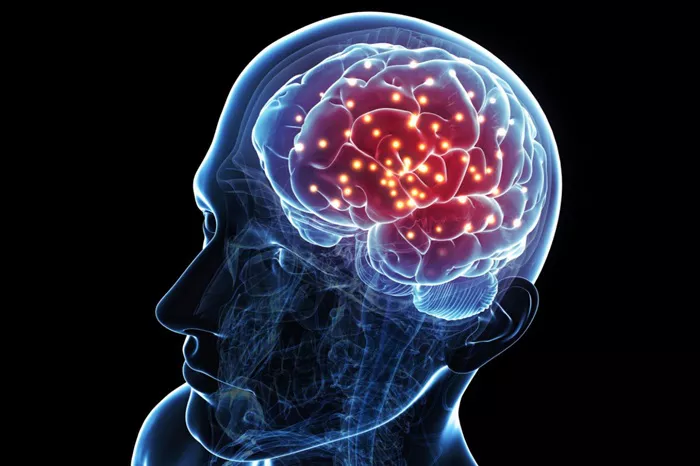Dyslexia is a prevalent learning disorder that has intrigued and challenged the field of education and neuroscience. It is essential to understand the neural correlates of dyslexia to provide appropriate support and intervention. This article explores the various parts of the brain affected by dyslexia and the implications for those with this condition.
The Frontal Lobes: The Command Center’s Struggles
1. Executive Function Disruptions
The frontal lobes are responsible for executive functions such as planning, organizing, and regulating behavior. In dyslexia, these functions can be compromised. For instance, when it comes to reading, individuals may have difficulty planning the steps needed to decode a word or understand a sentence. They might struggle to organize their thoughts and attention effectively, leading to a lack of focus and errors in reading comprehension.
2. Working Memory Woes
Working memory, which is crucial for holding and manipulating information during reading, is often affected. Dyslexic individuals may find it hard to remember the letters or sounds they have just processed while trying to make sense of the overall word or sentence. This can result in slow and inaccurate reading, as they are unable to keep up with the flow of information. Neuroimaging studies have shown reduced activation in frontal lobe regions related to working memory during reading tasks in dyslexic individuals.
The Temporal Lobes: Language Processing Hiccups
1. Wernicke’s Area and Beyond
The left temporal lobe houses the Wernicke’s area, a key region for understanding spoken and written language. In dyslexia, this area and its associated neural networks may not function optimally. Dyslexic individuals may have trouble processing the rapid auditory and visual language stimuli. They might have difficulties in recognizing and understanding words, as the neural connections that should integrate and make sense of the language input are disrupted.
2. Connectivity Challenges
The connections between the temporal lobes and other language-related areas, such as the frontal lobes, are also important. In dyslexia, these connections may be less efficient. This can lead to a breakdown in the seamless flow of information between different language processing centers. For example, when trying to express an idea in writing after reading a text, the impaired connectivity can result in difficulties in formulating coherent sentences.
The Parietal Lobes: Spatial and Sensory Glitches
1. Visual-Spatial Difficulties
The parietal lobes are involved in visual-spatial skills. Dyslexic individuals often experience problems in this domain. They may have trouble with tasks such as distinguishing between letters that are close together or following the correct sequence of text on a page. Letter reversals and skipping lines are common manifestations. This is because the parietal lobes’ ability to accurately process and interpret visual-spatial information related to reading is impaired.
2. Sensory Integration Hurdles
The parietal lobes also play a role in integrating sensory information. In reading, this means combining the visual input of the written word with the corresponding auditory representation. In dyslexia, this integration process may be disrupted. The brain has a harder time coordinating the visual and auditory cues, which leads to slower and less accurate reading. For example, when reading aloud, the dyslexic individual may have difficulty matching the visual word with the correct pronunciation.
The Occipital Lobes: Visual Perception Quandaries
1. Visual Discrimination Deficits
The occipital lobes are primarily responsible for visual perception. In dyslexia, there can be issues with visual discrimination. Dyslexic individuals may have trouble differentiating between similar-looking letters or shapes. This makes it challenging to recognize words accurately. For instance, they might confuse “b” and “d” or “p” and “q” more frequently than non-dyslexic individuals.
2. Connectivity to Language Areas
The neural pathways that connect the occipital lobes to other language areas in the brain are also affected. The transfer of visual information about a word from the occipital lobes to the temporal lobes for language decoding may be less efficient. This delay in processing the visual input and integrating it with the language system can lead to difficulties in understanding written text.
The Corpus Callosum: The Bridge Under Stress
1. Structural and Functional Alterations
The corpus callosum, which connects the left and right hemispheres of the brain, shows differences in dyslexia. It may be smaller in size or have reduced connectivity. Since reading involves the coordinated efforts of both hemispheres, with the left hemisphere more involved in language processing and the right hemisphere contributing to visual-spatial aspects, a less efficient corpus callosum can disrupt the communication between the two.
2. Impact on Reading Coordination
This disruption can lead to difficulties in integrating different aspects of reading. For example, when trying to write while reading, the motor skills involved in writing (which may be more right hemisphere-related) and the language understanding (left hemisphere) may not work in harmony. Dyslexic individuals may have trouble with tasks such as copying text accurately or taking notes while reading.
Neural Plasticity and Intervention Strategies
1. The Brain’s Adaptive Capacity
Despite the neurological differences in dyslexia, the brain has a remarkable ability to adapt and change, known as neural plasticity. Understanding which parts of the brain are affected by dyslexia allows for the development of targeted interventions.
2. Educational and Therapeutic Approaches
For example, phonological awareness training can help strengthen the neural connections in the language processing areas. Multisensory teaching methods, which combine visual, auditory, and tactile cues, can enhance the communication between different brain regions involved in reading. With appropriate and consistent intervention, the brain of a dyslexic individual can develop new neural pathways and improve reading skills over time.
Conclusion: Piecing Together the Dyslexia Puzzle
In conclusion, dyslexia is a complex disorder that impacts multiple regions of the brain. The frontal, temporal, parietal, occipital lobes, and the corpus callosum all play a role in the difficulties experienced by those with dyslexia. By understanding these neural underpinnings, educators and researchers can better design interventions and support systems. This knowledge is crucial for providing dyslexic individuals with the tools they need to overcome their reading challenges and reach their full potential in education and life.
Related Topics:


